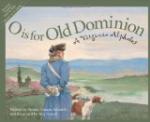We now were on our way to pick up other bits of the river story, and especially those concerning the peculiar colonial home life on the James. When tobacco culture, with its ceaseless demand for virgin soil, led many of the colonists to abandon James Towne and to build up great individual estates, each estate had to have its water front; and old Powhatan became lined on both sides with vast plantations. Later, the lands along other rivers were similarly occupied. So pronounced was the development of plantation life that it affected, even controlled, the character of the colony and determined the type of civilization in Virginia.
The great estates became so many independent, self-sufficient communities—almost kingdoms. Each had its own permanent population including, besides slaves and common labourers, many mechanics, carpenters, coopers, and artisans of various kinds. An unbroken water highway stretched from each plantation wharf to the wharves of London. Directly from his own pier, each planter shipped his tobacco to England; and in return there was unloaded upon his own pier the commodities needed for his plantation community.
Thus was established the peculiar type of Virginia society, the aristocracy of planters, that dotted the Old Dominion with lordly manor-houses and filled them with gay, ample life—a life almost feudal in its pride and power. In this day of our nation’s tardy awakening to an appreciation of its colonial homes, a particular interest attaches to these old Virginia mansions, once the centres of those proud little principalities in the wilderness.
And the particular interest of Gadabout’s people, as Jamestown Island faded from sight, attached to a few of the earliest and most typical of those colonial homes that we knew yet stood on the banks of the “King’s River.” From kindly responses to our notes of inquiry, we also knew that long-suffering Virginia courtesy was not yet quite exhausted, and that it still swung wide the doors of those old manor-houses to even the passing stranger. Our next harbour was to be Chippoak Creek, which empties into the river about twelve miles above Jamestown Island. There we should be near two or three colonial homes including the well-known Brandon.
It seemed good to be under way again. There was music in the chug of our engines and in the purl of the water about our homely bows. The touch of the wind in our faces was tonic, and we could almost persuade ourselves that there was fragrance in the occasional whiffs of gasoline.
We soon came to an opening in the shore to starboard where the James receives one of its chief tributaries, the Chickahominy, memorable for its association with the first American romance. Though the tale is perhaps a trifle hackneyed, yet the duty of every good American is to listen whenever it is told. So here it is.




